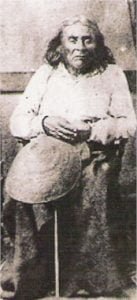Salishan Indian Dialects
The Salishan dialects may be grouped as follows: Dialects of the Interior Lillooet in west British Columbia Ntlakyapamuk (Thompson Indians) in south west British Columbia Shusowap in south central British Columbia Okinagan in south east British Columbia, extending into the United States, the subdivisions of which are Okinagan proper Colville Nespelim or Sanpoil Senijextee (Snaichekstik) of the Arrow lakes and Columbia river below the lakes Flathead in eastern Washington, Idaho, and Montana, subdivisions of which are Spokan Kalispel or Peud d’Oreilles Salish or Flathead Skitswish or Coeur d’Alènes in nothern Idaho Columbia groups in the west part of the interior … Read more


